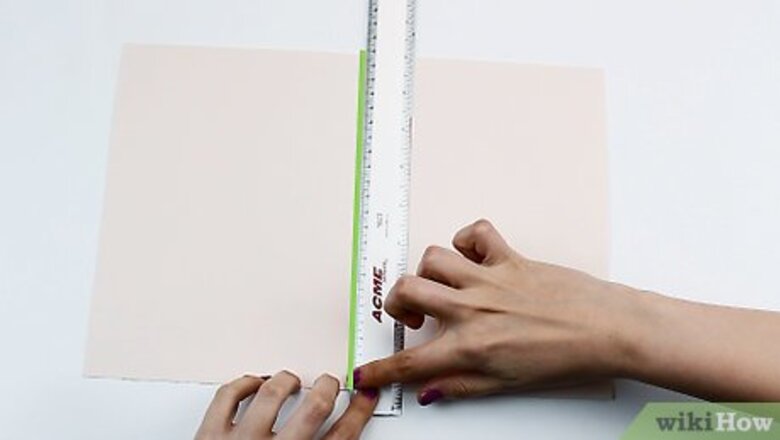
views
Note: If you're looking for masks to help prevent the spread of illness, you can create a medical mask instead.
Making a Paper Mask
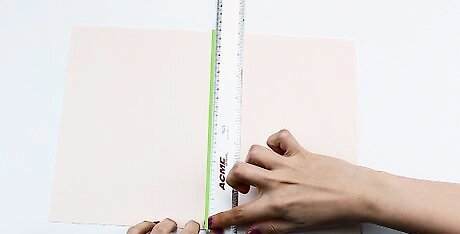
Cut a rectangle out of paper for the base of your mask. Measure across your face from temple to temple. Next, measure the height of your face, from your nose to the top of your forehead. Draw a rectangle on a sheet of plain paper based on those 2 measurements, then cut it out. Use a measuring tape for this. This is just the base of your mask, so plain printer paper will work the best. You will trace the final shape onto nicer paper later on. Most paper masks are masquerade style, so they only cover the top half of your face.
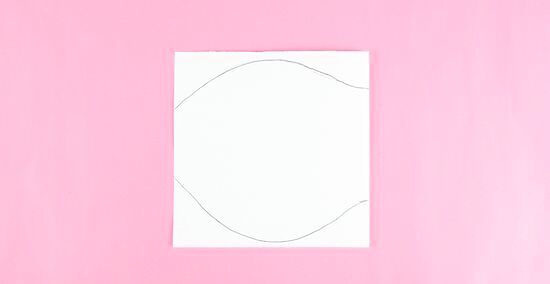
Fold the paper in half, then draw half of your mask shape on it. Fold the paper in half widthwise so that the shorter edges match up. Draw half of your desired mask shape onto the folded rectangle, with the center of the mask aligned with the folded edge. Be sure to fill the entire rectangle. Make the mask curve upward towards the bottom edge of the fold. This will create a gap for your nose and make the mask more comfortable to wear. If you can't decide what shape to make, place your hand against the paper, with your wrist touching the folded edge, then trace around your hand.
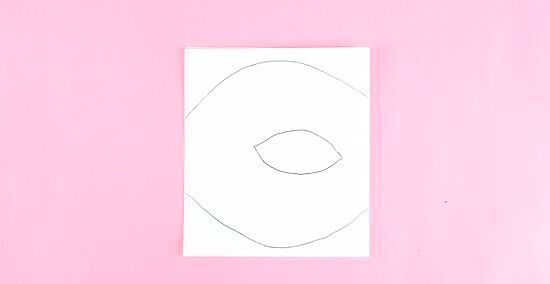
Draw the eye hole. Measure the distance between the inside corners of your eyes, then divide that measurement by 2. Draw the eye hole that distance from the folded edge of your rectangle. The eye hole can be any shape you want, but an almond or cat eye shape would work the best. It would be a good idea to make the eyes a little bit bigger than your own. This will make the mask more comfortable to wear. For example, if your eyes are 1 inch (2.5 cm) apart, make the eye hole ⁄2 inch (1.3 cm) from the folded edge. You are only drawing 1 eye for now. When you cut and unfold your mask, you'll have 2 identical eyes! It would be a good idea to measure the height and width of your eye so that you don't accidentally make the eye hole too small.
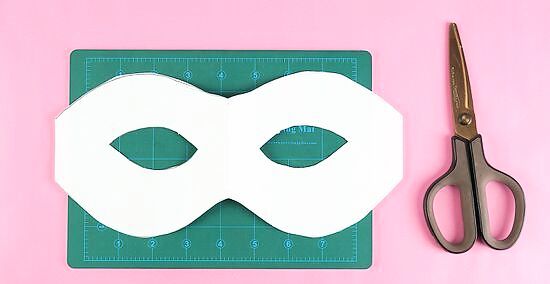
Cut the mask out, including the eye holes, then unfold it. At this point, you can move onto the next step, or you can trace the mask onto nicer paper, then cut the final mask out. In either case, it would be a good idea to try the mask on, and make any adjustments. After you make the adjustments, trace the adjusted mask onto new paper, then cut it out. If you are tracing the mask into nicer paper, do not fold the nicer paper. Use a craft blade to cut the eye holes out. Make sure that you work on top of a cutting mat.
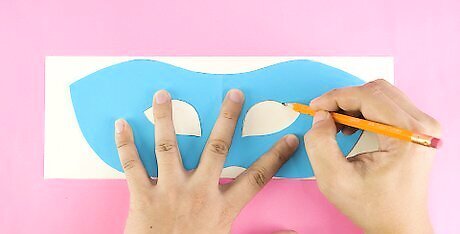
Trace the mask onto cardstock, then out it out. You don't have to do this, but it will make your mask thicker and more durable. Simply set the mask down onto a sheet of cardstock and trace around it. Cut the mask out, including the eye holes. Don't fold the cardstock. Simply unfold the mask, set it down onto the cardstock, and trace around it.

Glue the cardstock to the back of the mask. Use a paintbrush to apply a thin coat of liquid glue to the cardstock mask, then press the paper mask on top. Smooth out any wrinkles, then let the glue dry. You can use a glue stick as well, but it won't be as durable. Glue sticks tend to peel away over time. For a nicer finish, leave ⁄2 inch (1.3 cm) on the left and right side of the mask unglued. You'll attach the ribbons to these ends. Skip this step if you did not cut a cardstock mask out.
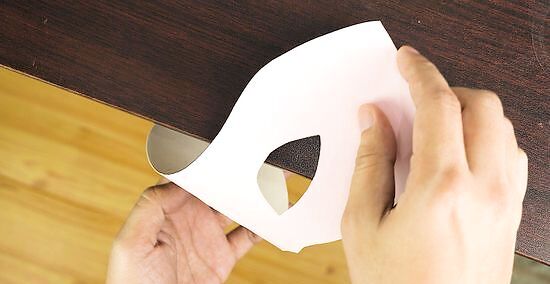
Curve the mask over the edge of a table. Place your mask over the edge of a table with the paper side facing up. Pull the end of the mask over the edge of the table as you press down on the center of the mask with your palm. Repeat this step for the other end of the mask too. This will give the mask a slight curve and make it more comfortable to wear. You can also just roll the ends of the mask by hand instead.
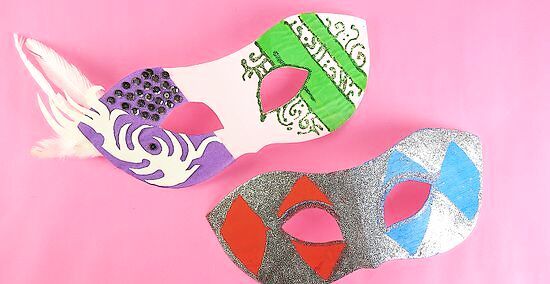
Decorate the mask as desired. You can get as creative as you want here. For a simple mask, you can draw on it with a gold or silver permanent marker. For a fancier mask, you can use items such as glitter glue or rhinestones. Choose a color that contrasts with your mask. Gold or silver will work the best, but you can also use black or white. Here are some ideas to get you started: Outline the mask and the eye holes with glitter glue or puffy paint. Glue rhinestones or sequins onto the mask. Hot glue some long feathers to the top left or right corner of the mask. Hot glue a trim to the edges of the mask. Glue lace over the mask to give it texture, then decorate the mask with a sequin trim.
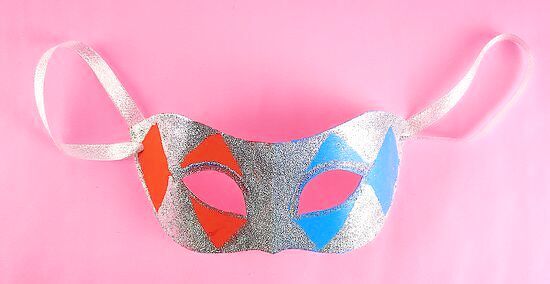
Punch a hole on each side of the mask, then add a ribbon. Use a hole puncher to make a hole on the left end of the mask. Thread a length of ribbon through the hole, then tie it to itself. Repeat this step for the other end of the mask too. The ribbons need to be long enough to wrap around to the back of your head and tie into a bow. About 22 inches (56 cm) for each piece should be long enough. Match the color of the ribbon to the decorations on your mask. For example, if you used lots of gold on your mask, use gold ribbon. If you left ⁄2 inch (1.3 cm) on each side of the mask unglued, only punch a hole in the bottom cardstock layer. Leave the upper paper layer intact.
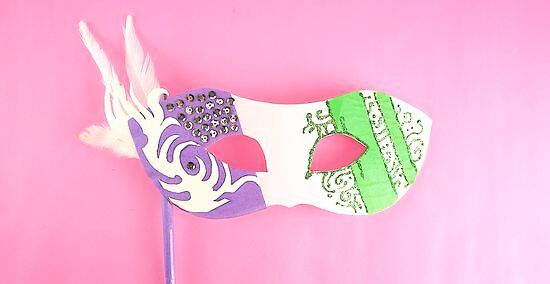
Hot glue the mask to a stick if you prefer to hold it. Get a 12 to 14 in (30 to 36 cm) dowel. Paint the dowel with spray paint or acrylic craft paint if desired, then let the paint dry. Hot glue the left or right edge of the mask to the top of the dowel. For a fancier dowel, wrap a skinny ribbon around the dowel to create a candy cane effect. Hot glue both ends of the ribbon to the dowel. If you are left-handed, glue the left end of the mask to the dowel. If you are right-handed, glue the right end of the mask to the dowel. If you can't find a dowel, roll a piece of paper into a thin tube, then glue down the end so that it holds together. Choose 1 option or the other. Don't do both ribbon ties and a stick.
Making a Foil-Base Mask

Stack 8 to 10 pieces of aluminum foil together to make a thick sheet. Tear off 8 to 10 equal-sized pieces of aluminum foil; make sure that each piece is big enough to cover your face. Stack the pieces together, then press down on them. Scrunch the pieces, then straighten them back out. This will help them "stick" together better. This will create the base of your mask. If you prefer, you can use a full-face plastic mask from the craft store instead. Click here to continue.

Place the foil over your face and mold it over your features. Take the entire stack of foil, and place it over your face. Gently press down on the foil to mold it over your nose, mouth, and eye sockets. Be sure to mold it against the sides of your face too. The mask should cover your entire face, from hairline to chin.
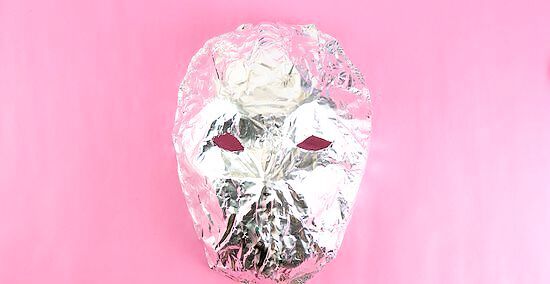
Cut out the eye holes and refine the edges. The bulges caused by your eyes should be visible on the mask, but if they aren't, put the mask on, feel your eyes through the foil, then trace around them with a permanent marker. Be sure to trim the excess foil from the edges of the mask as well. You can have the mask cover your entire face or just part of it. For example, if you want a half-mask, it can go from your nose to forehead. Aluminum foil can ruin scissors, so use an old or cheap pair for this step. This way, if you accidentally ruin the scissors, it won't be such a big loss.
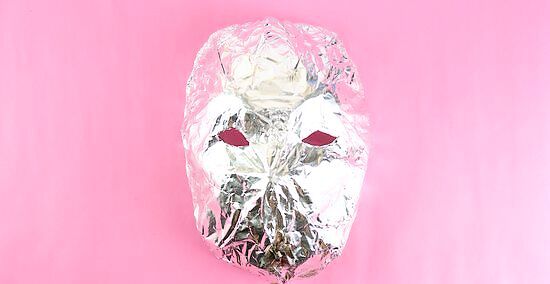
Cut slits into the curved areas, overlap them, then tape them together. Cut a 1 in (2.5 cm) slit into each side of the forehead. Overlap the slits to create a curved edge, then tape them together with masking tape. Repeat this step for the chin if this is a full-face mask. The more you overlap the slits, the deeper the curve will be. At this point, it would be a good idea to reinforce the other cut edges (including the eyes) with masking tape as well. This will help make the mask more comfortable.
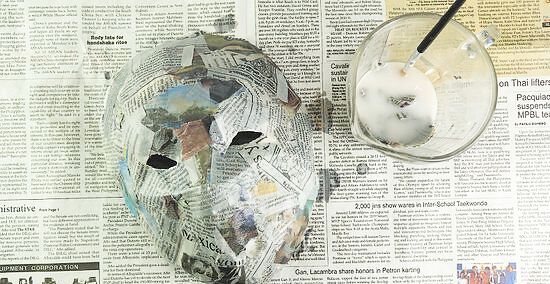
Cover the mask with 3 layers of papier mâché. Mix together equal parts of glue (or flour) and water, then tear newspaper into thin strips. Dip the strips into the paste, then smooth them over the mask. Apply the first 2 layers right on top of each other, let them dry (about 20 to 60 minutes), then apply the third. Let the third layer dry too. Make the newspaper strips about 1 to 2 inches (2.5 to 5.1 cm) wide and 3 to 4 inches (7.6 to 10.2 cm) long. Use smaller strips for small areas, such as the nose, and larger strips for large areas, such as the forehead. Be sure to fold the strips over the cut edges of the mask, including the eye holes. This way, the cut aluminum won't scratch you. You can cover the mask with plaster cloth instead. Cut the cloth into strips, then soak them to activate the plaster. You only need 2 layers. For a nicer finish, cover the inside of the foil mask with 1 layer of papier mâché as well. Do this after the outer layer dries.
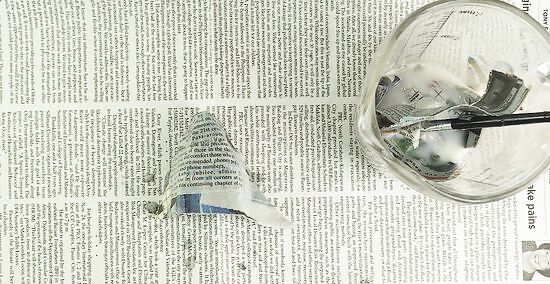
Use more foil, tape, and papier mâché to add more details, like ears. Sculpt the details with foil first, then secure them to your mask with masking tape. Cover the details with 3 layers of papier mâché, allowing each layer to dry. Other details you can add include noses, eyebrows, and mustaches. If you want the mask to be smoother, cover it with another 3 layers of papier mâché, but this time, use paper towels instead of newspaper. If you are using a store bought mask, you can try lifting the plaster mask off of the plastic base.
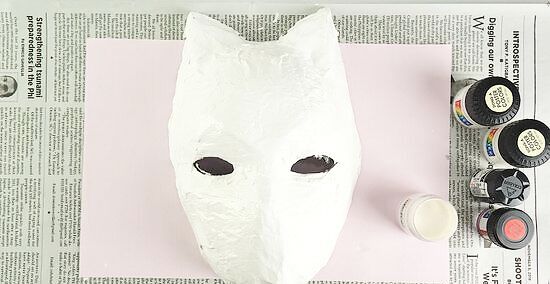
Prime the mask with white paint or gesso. While not absolutely necessary, this will give you a nice base to work off of. Coat the mask with 1 layer of white acrylic craft paint or white spray paint, then let it dry. Apply another layer if the paper towels still show through. Use a synthetic taklon paintbrush to apply the acrylic craft paint. Don't use camelhair or boar bristle. Apply spray paint in a well-ventilated area. Keep the can 6 to 8 inches (15 to 20 cm) from the mask. For a smoother finish, apply a few coats of white gesso. Let it dry, then sand it with fine-grit sandpaper. Anything between 180- and 320-grit will do.
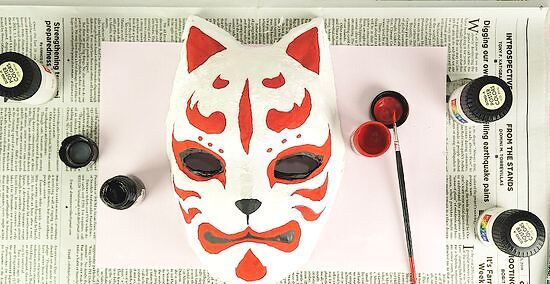
Paint or decorate the mask as desired. Once your base layer is dry, you can paint or decorate your mask to your heart's content. For example, you could sketch designs out with a pencil, then fill them in with acrylic craft paint and a thin, pointed brush. Here are some more ideas to get you started: Paint the mask to make it look like an animal, a samurai, or a kabuki mask. Use hot glue or tacky glue to adhere embellishments to the mask, such as rhinestones, feathers, or sequins. Decorate the mask with glitter glue. Alternatively, draw designs with white school glue, then sprinkle glitter on top. Coat a painted mask with glossy acrylic sealer to make it look glazed.
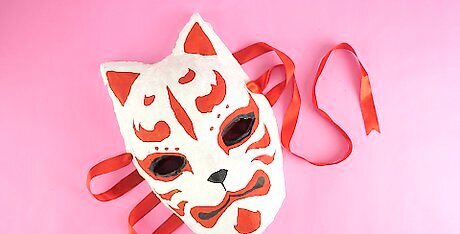
Poke holes in the sides of the mask, then add string, if desired. Use a hole puncher to make a hole on each side of the mask at about ear level. Cut two 22 in (56 cm) pieces of string, then tie each string to each hole. Fit the mask over your face, then tie the strings together into a bow at the back of your head. If you prefer a decorative mask, hammer a nail into the wall, then hang the mask from the nail. Use thin ribbon for a fancier mask. Match the color to the embellishments on your mask.


















Comments
0 comment